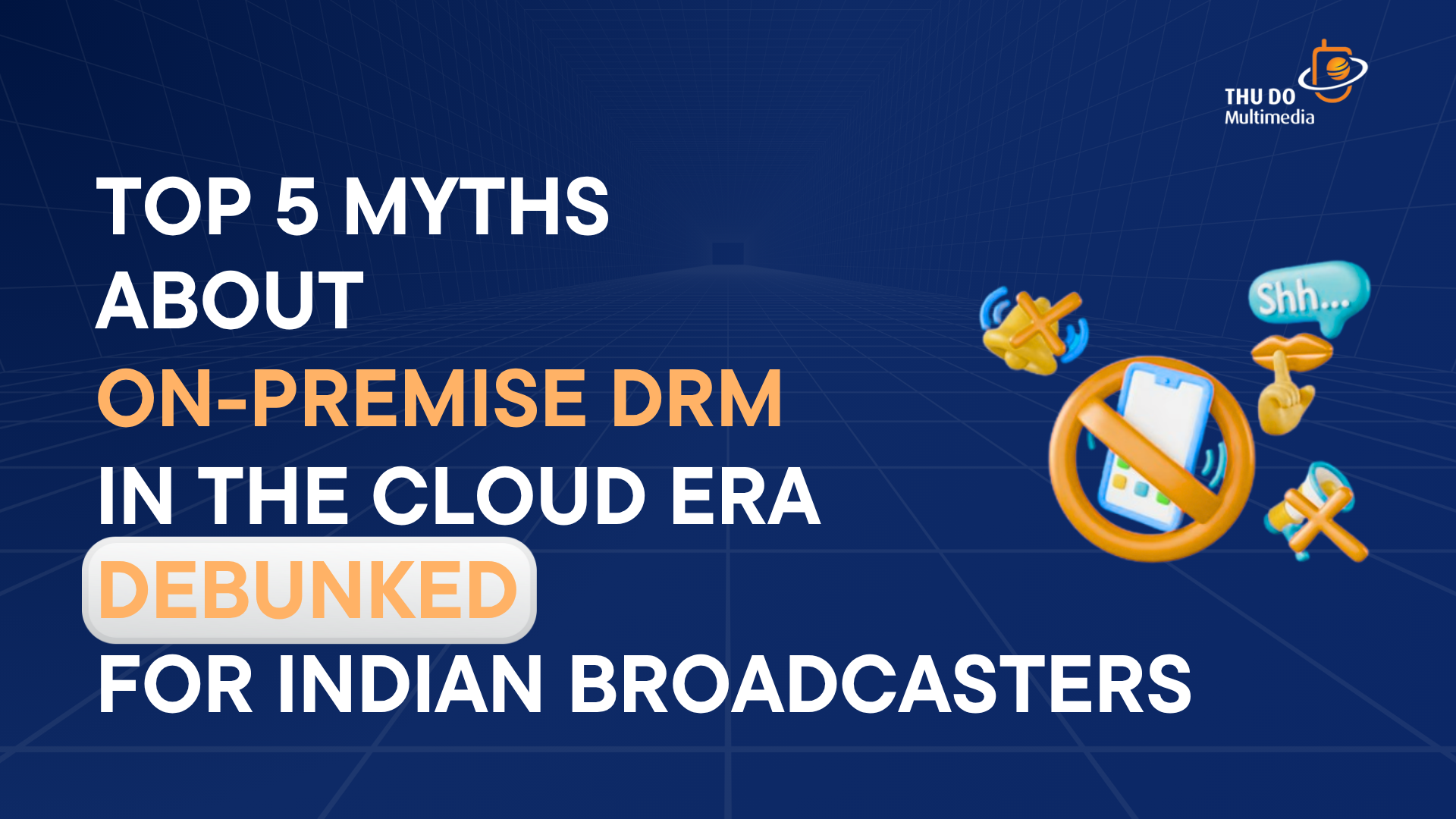In today’s cloud-driven media landscape, many Indian broadcasters still hold onto outdated beliefs about on-premise DRM, but it’s time to separate fact from fiction and uncover the real advantages of this robust digital rights management solution.
Is on-premise DRM Still Relevant in the Cloud Era?
In an age where cloud solutions dominate the tech headlines, one would assume that traditional, on-premise systems have become obsolete. But that’s far from the truth, especially in the Indian broadcasting industry. While the cloud offers convenience and speed, broadcasters still face serious concerns around control, compliance, and security. These concerns are exactly why On-Premise Digital Rights Management (DRM) systems continue to thrive.
However, there’s no shortage of myths and misconceptions surrounding On-Premise DRM. In this article, we debunk the five most common myths and explain why Indian broadcasters still choose physical control to protect their content.
Myth #1: “Cloud Is Always Cheaper Than On-Premise”
At first, cloud services appear budget-friendly. You only pay for what you use, right? However, over time, the costs accumulate, especially for broadcasters with high traffic volumes, complex licensing agreements, and extensive content libraries. Monthly fees, data egress charges, and support costs can quickly exceed initial expectations.
On the other hand, on-premise DRM involves upfront setup costs, but once installed, it drastically reduces long-term operating expenses. You own the infrastructure. You avoid unpredictable price hikes. And with greater control comes better bargaining power, content partners may offer favorable terms to networks with proven internal security.
Myth #2: “On-Premise DRM Is Outdated Technology”
This myth is rooted in the idea that physical systems can’t keep up with innovation. But today’s On-Premise DRM is nothing like the legacy systems of the early 2000s.
Modern On-Premise solutions are equipped with:
Modular and containerized architecture
Integration-ready APIs for SMS, billing, and CDNs
Real-time monitoring dashboards
Automated updates and security patches
Take Sigma DRM, for instance a solution purpose-built for the Indian market. It blends the best of modern design with the benefits of internal control. It’s smart, adaptable, and perfectly suited for broadcasters looking to future-proof their operations.
Myth #3: “Cloud Is More Secure”
Security is a top concern in broadcasting, especially when handling high-value assets like live cricket matches, movie premieres, or political content. Many assume that cloud providers are safer because they invest heavily in cybersecurity.
However, the cloud is not immune to global threats, misconfigurations, or multi-tenant vulnerabilities. When a cloud breach happens, your content could be at risk even if the mistake isn’t yours.
On-Premise DRM puts all the control in your hands. You manage access. You protect encryption keys. You define who sees what, and when. This local governance significantly reduces the attack surface. And in a country like India where data sovereignty and MIB/TRAI regulations matter. On-Premise gives you the confidence to comply.
Myth #4: “It Takes Too Long to Deploy”
Yes, cloud DRM can be faster to activate. But let’s talk about the full picture. On-Premise DRM doesn’t have to take months. With proper planning and the right vendor support, Indian broadcasters have launched secure, scalable On-Premise systems in as little as 3-4 weeks.
Here’s how:
Use pre-configured deployment templates
Leverage modular architecture
Partner with local experts familiar with Indian infrastructure
The extra time spent on setup pays dividends later, especially during high-stakes events when stability and reliability are non-negotiable.
Myth #5: “You Can’t Scale With On-Premise DRM”
This myth assumes that cloud is the only path to scalability. That’s simply not true.
Modern On-Premise DRM can scale horizontally by adding new nodes, distributing load across clusters, and integrating with edge CDNs. You can serve millions of users, expand to multiple regions, and maintain performance, all while keeping control in-house.
In fact, many Indian broadcasters use hybrid models: On-Premise DRM for critical content, and cloud services for secondary tasks like analytics or testing. This approach balances control with convenience.
Conclusion: Physical Control Still Reigns
For Indian broadcasters navigating piracy, compliance, and viewer trust, physical control remains essential. On-Premise DRM is not a relic of the past, it’s a vital part of a secure, sovereign digital strategy.
By busting these myths, we hope to clarify the real value On-Premise DRM offers:
Long-term cost efficiency
Customization for Indian workflows
Enhanced control over sensitive content
Resilience against outages and attacks
Compliance with national regulations
Discover more in The Roadmap to Tackle IPTV Piracy at Its Root with DRM-SMS Integration to master on-premise DRM.
Ready to Explore On-Premise DRM?
Talk to the experts at Sigma DRM. We’ll help you assess your needs, design a tailored deployment, and ensure your content is protected on your terms.
Book a demo today and take back control of your broadcast future.


Recent Comments